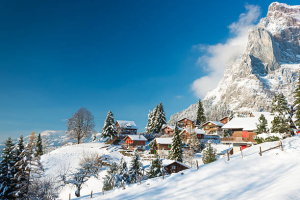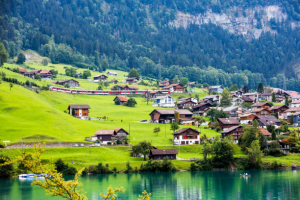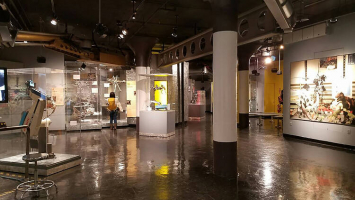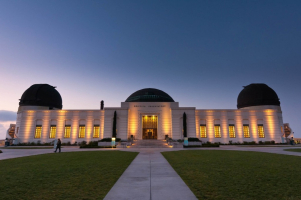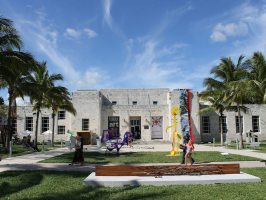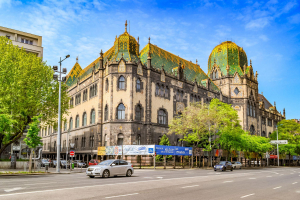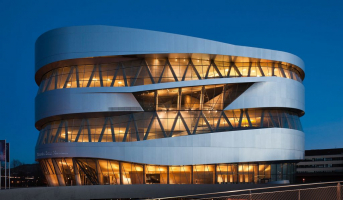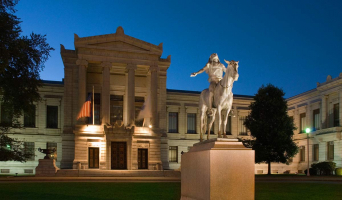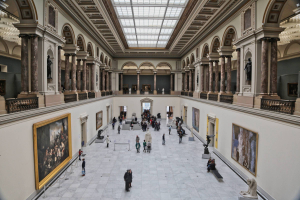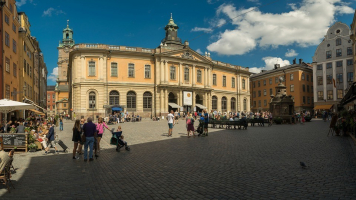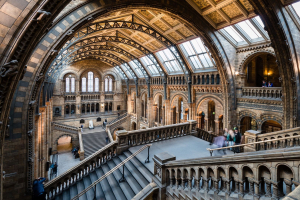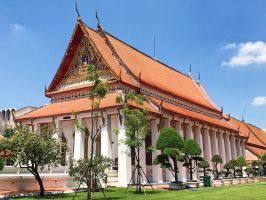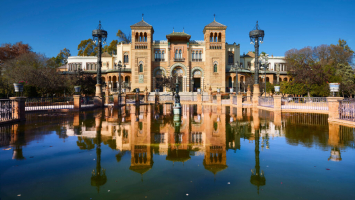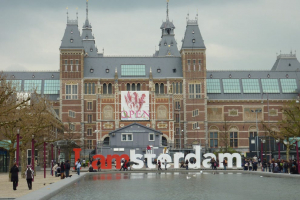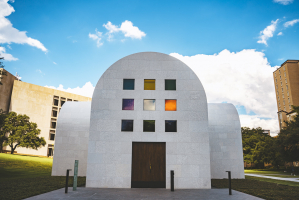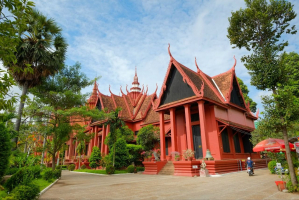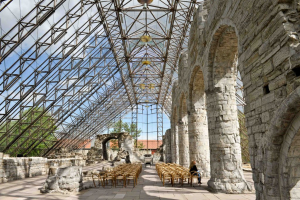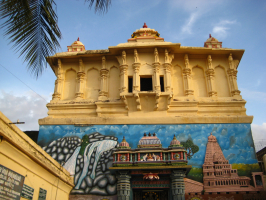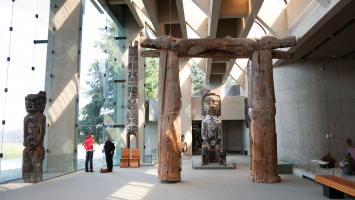Top 10 Best Museums to Visit in Switzerland
Switzerland has a rich history and culture, which is reflected in its numerous museums. In reality, there are over 900 of them scattered around the country, a ... read more...figure that has more than quadrupled since WWII's conclusion. Switzerland's museums have an intriguing narrative to tell with a rich and diverse past. The following are the best museums in Switzerland.
-
The Swiss National Museum houses the greatest collection of Switzerland's way of life throughout its history. The permanent display is located at the Landesmuseum in Zurich, and the entire museum has over a million national-importance exhibits. The exhibits trace the history of the country's culture from the Paleolithic period to the present. The Swiss National Museum is made up of three museums: the Landesmuseum in Zurich, the Prangins Castle, and the Forum of Swiss History. All three structures house amazing prehistoric displays, medieval items, and various ecclesiastical sculptures.
The museum tour takes visitors from prehistory to ancient periods, the Middle Ages, and the twentieth century (classic modern art and art of the 16th, 17th, and 18th century is settled mainly in the Kunsthaus Museum in a different part of the city of Zurich). A particularly rich portion contains gothic art, chivalry, and a large collection of liturgical wooden sculptures, panel paintings, and carved altars. The Swiss National Museum's porcelain and faience collection is housed at Zunfthaus zur Meisen, near Fraumünster church.
Location: Museumstrasse 2, Zurich, ZH 8001
Website: nationalmuseum.ch
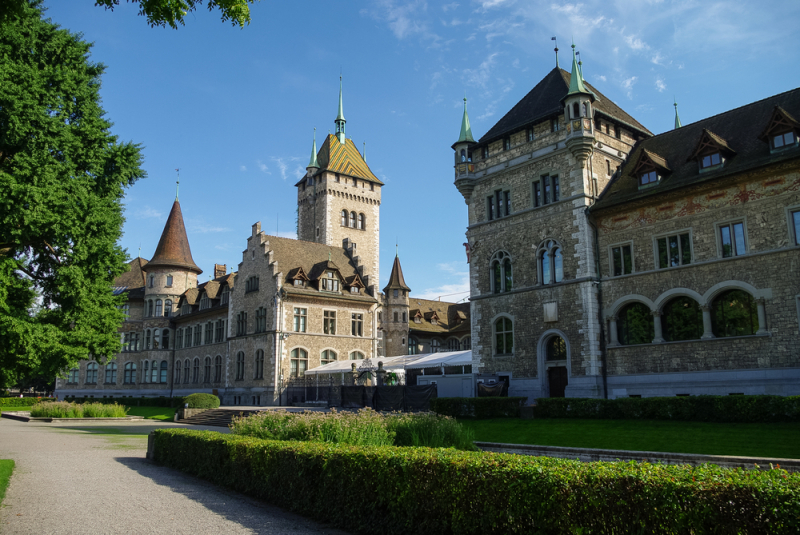
Swiss National Museum 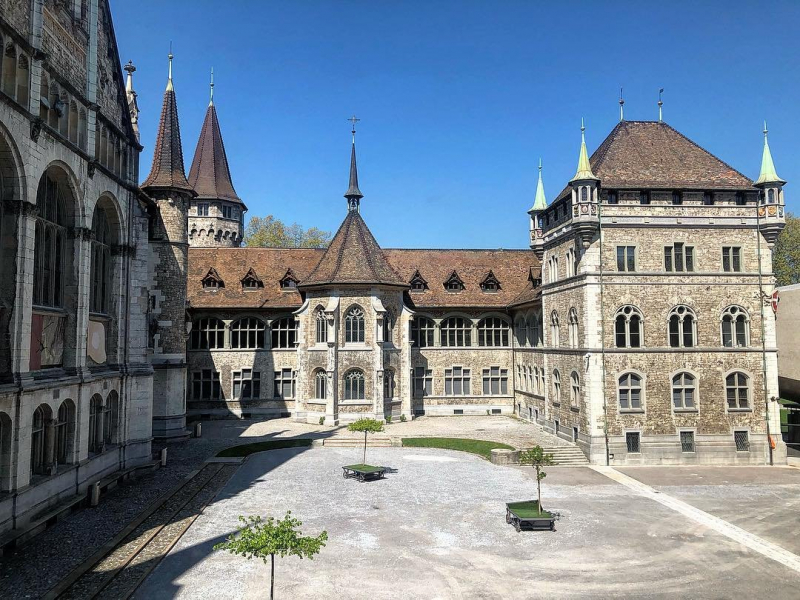
Swiss National Museum -
Switzerland is well-known for having one of the world's most efficient transportation networks. As a result, having the best transport museum is nearly expected. It's the most visited museum in the country for good reason. It recounts the history of transportation, from the earliest plane and railway models through futuristic transportation concepts. The museum also includes Media World, which has 3D movies, cafés, and restaurants. The Swiss Chocolate Adventure, an interactive experience that follows the process of how a cocoa bean is turned into one of the country's greatest goods - chocolate – is a fan favorite.
The museum dates back to 1897 when the first attempts were made to create a museum of railway equipment. Following a nationwide exposition in 1914, Swiss Federal Railways established the Swiss Railway Museum in Zurich in 1918. The concept subsequently expanded to include all modes of transportation, and the Swiss Museum of Transport organization was founded in 1942. Swiss Federal Railways teamed together with Swiss Postal Telegraph and Telephone, as well as other private transportation, commerce, industry, and tourism groups.
Location: Lidostrasse 5, Lucerne, LU 6006
Website: verkehrshaus.ch/en/home.html
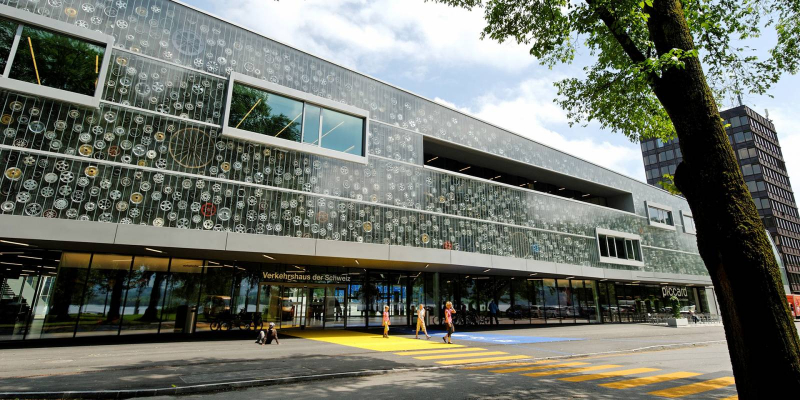
Swiss Museum of Transport – Lucerne 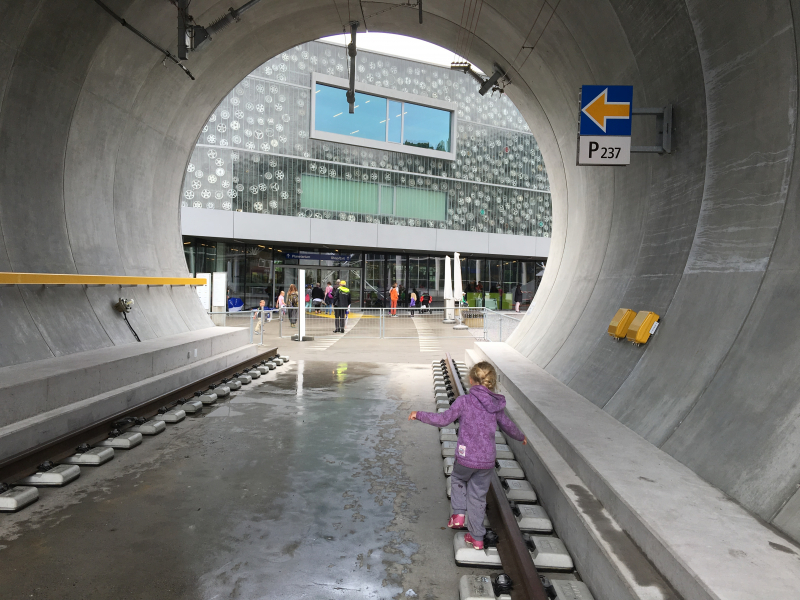
Swiss Museum of Transport – Lucerne -
Geneva, Switzerland is home to the International Red Cross and Red Crescent Museum. The museum first opened in 1988 and had a major refurbishment from 2011 to 2013. An exhibition titled "The Humanitarian Adventure" presents three contemporary problems through three distinct spaces, each designed by a different architect: Defending human dignity (Gringo Cardia, Brazil), Reconstructing family links (Diébédo Francis Kéré, Burkina Faso), and Reducing natural risks (Diébédo Francis Kéré, Burkina Faso) (Shigeru Ban, Japan).
Although it emphasizes information and thought, museography adds a new layer to its device: emotion. Visitors are asked to engage in an awareness-building experience as they approach each of the three themed sections, even before they learn the area's instructional content.
The major thread of "The Humanitarian Adventure" is traced by twelve witnesses. They greet guests in a scenographic apparatus before accompanying them on a tour of the show. The witnesses are present to remind us that every human activity is based on human relationships.Location: Avenue de la Paix 17, Geneva, GE 1202
Website: redcrossmuseum.ch
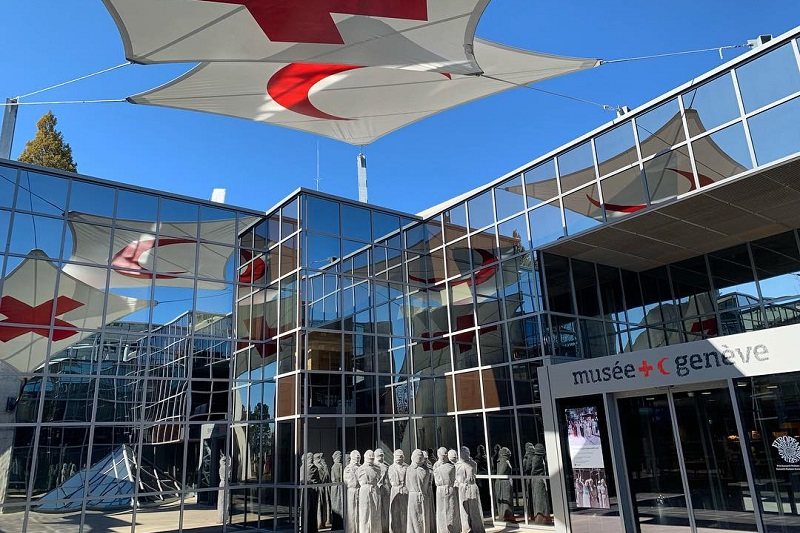
International Red Cross and Red Crescent Museum 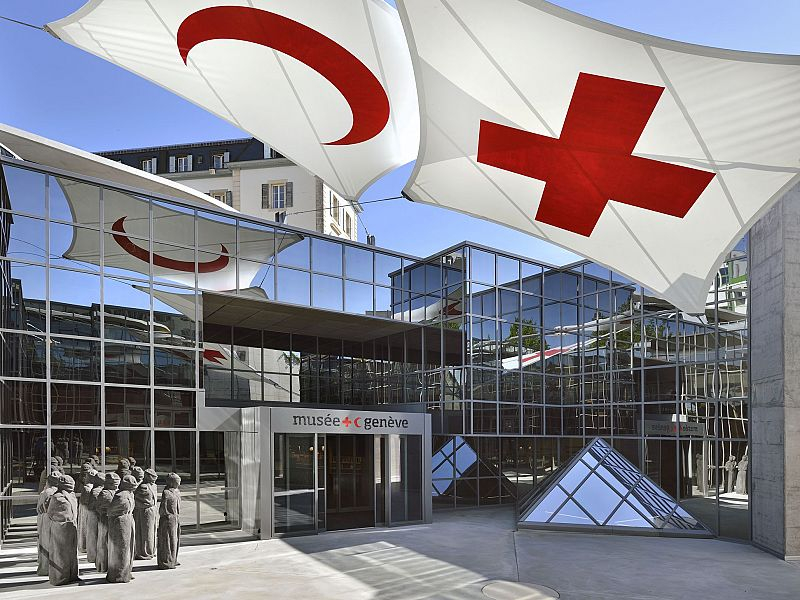
International Red Cross and Red Crescent Museum -
Microcosm, often known as the CERN Museum, is an interactive display that showcases the work of CERN's particle physics laboratory and its flagship accelerator, the Large Hadron Collider. The current exhibition debuted in January 2016. CERN created the content in partnership with the Spanish design firm Indissoluble.
CERN is one of the world's most important science and discovery museums. There are public tours and displays available that discuss all of the work that the center is focusing on. They also include various interactive displays for younger visitors to assist them to understand more sophisticated scientific ideas.
Fans of science fiction films and literature are likely to be familiar with CERN and the various machines housed within it. Visitors can go inside the Large Hadron Collider (when it is not turned on) with proper planning and timing. The Globe of Science and Innovation, the center's homage to Earth and a symbol of science, particle physics, and technology is the most popular component of CERN.Location: Esplanade des Particules 1, P.O. Box, 1211 Geneva 23, Switzerland
Website: visit.cern
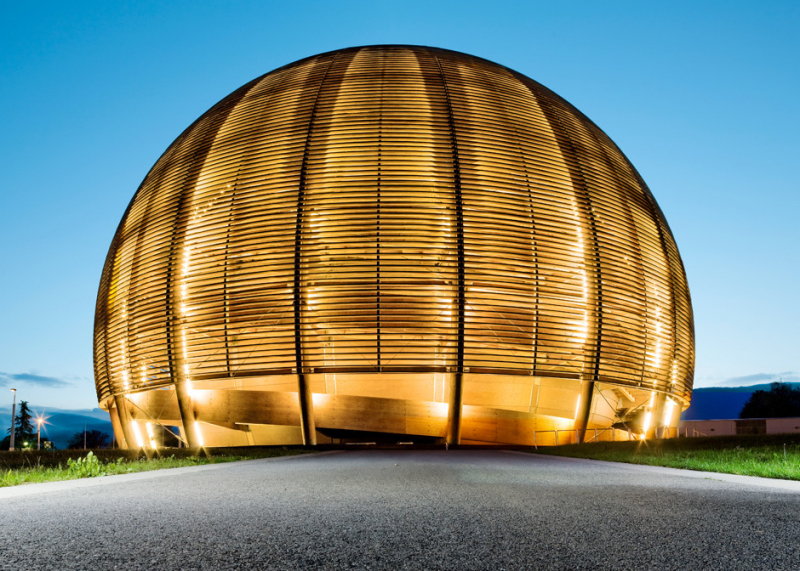
CERN 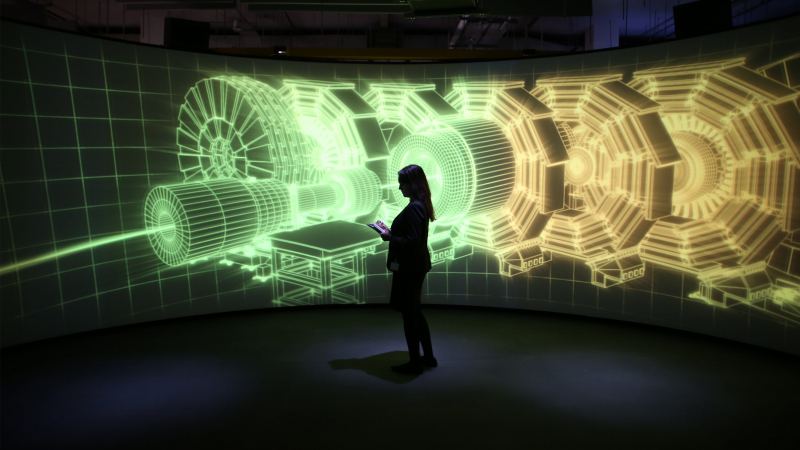
CERN -
Switzerland has several museums around the country, but the Bernisches Historisches Museum - Einstein Museum is unique. After all, where else in the world can you find a museum dedicated to the guy who developed General Relativity and Special Relativity, as well as whose hair can be recognized from a mile away. And don't forget that Einstein invented special relativity while riding the tram to work in Bern.
The museum exhibits a diverse variety of materials dedicated to Einstein, his life, work, and brilliance. The museum houses around 550 genuine and replica artifacts, as well as 70 unique films and covers a variety of themes related to his work and life. Some of the most poignant exhibitions are those on the Holocaust and the dropping of the first atomic bomb on Hiroshima. Especially since Einstein was born in Germany and his work had a significant impact on the creation of the bomb.
Location: Helvetiaplatz 5, Bern 3005 Switzerland
Website: bhm.ch/en/exhibitions/einstein-museum
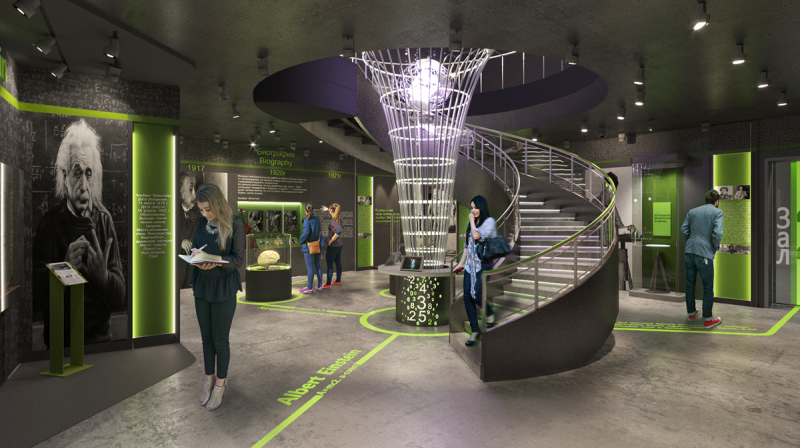
Einstein Museum 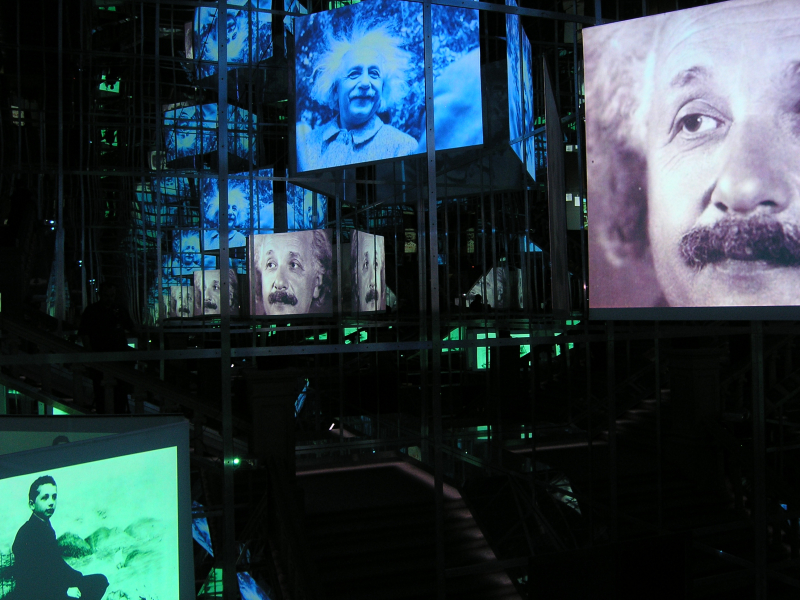
Einstein Museum -
Musee Olympique, founded in 1993 at the house of the International Olympic Committee, displays the story of the Olympic movement in a beautiful and affluent setting on the shores of Lake Geneva in Ouchy. The displays are divided across three floors and depict the origins of the games from ancient Greece through modern-day Olympic milestones. There are thousands of video clips to see, all of which capture significant moments in sports history.
On three different floors, the permanent display is divided into three key themes: Olympic World, Olympic Games, and Olympic Spirit. The Olympic World section of the exhibition begins on the third level, where visitors learn about the history of the ancient Olympic Games and the rebirth of the contemporary Games in the nineteenth century. A display of Olympic torches, as well as a movie highlighting important milestones in the history of opening ceremonies, are among the highlights.
Location: Quai d'Ouchy 1, Lausanne, VD 1006
Website: olympic.org
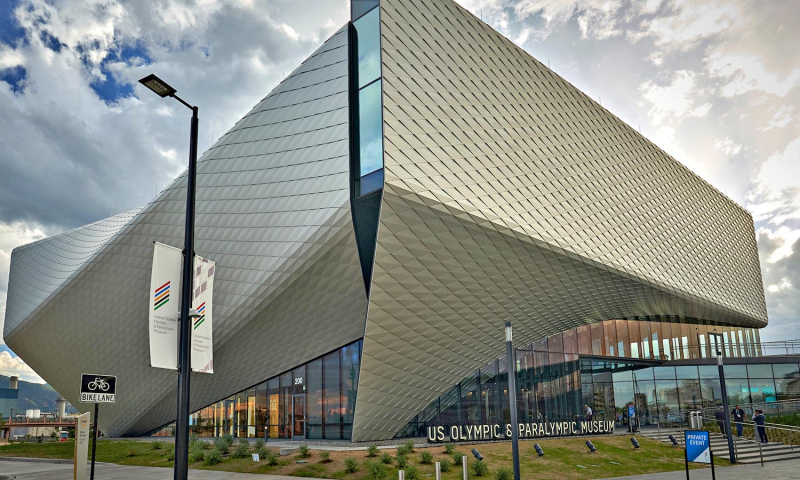
Olympic Museum 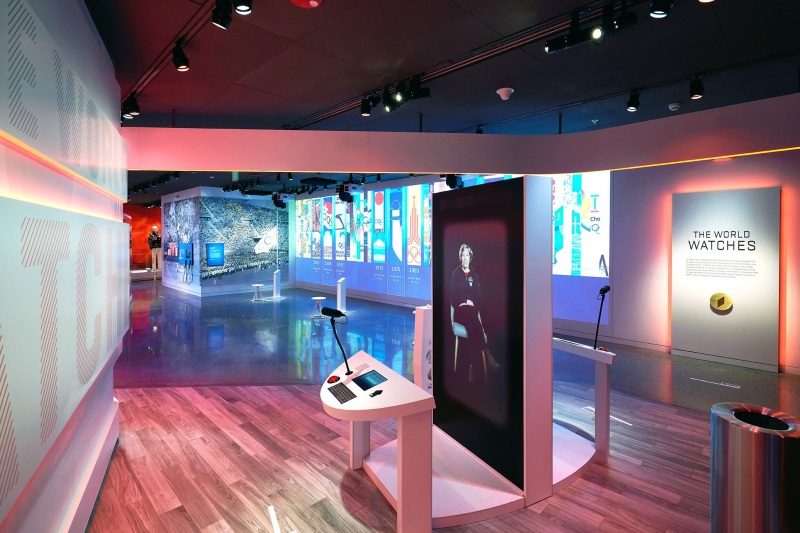
Olympic Museum -
The Textile Museum in St. Gallen is another renowned and unusual museum in Switzerland. It is a recounting of fashion history as well as the growth of textile fabric and designs across time. The museum, however, provides a significant account of the town's development to affluence, owing mostly to the textile sector.
The collection contains 30,00 textile artifacts and samples, including cloth from Egyptian gravesites, embroideries from the 14th century, and ethnographic textiles. The skill that goes into making these fabrics reflects the artistry of their creators, who come from all around the world.
Participate in a collaborative piece of embroidery at the Textile Museum St.Gallen to leave your imprint with needle and thread. Embroidering is not difficult to learn, and anybody may participate, whether by embroidering their initials or making a little, unique work of art. Be a part of a larger collaborative work of art that is expanding by the day. A work that demonstrates the participants' teamwork in all of its different and colorful shapes and forms!
Location: Vadianstrasse 2, 9000 St. Gallen, Switzerland
Website: textilmuseum.ch/en/textilmuseum
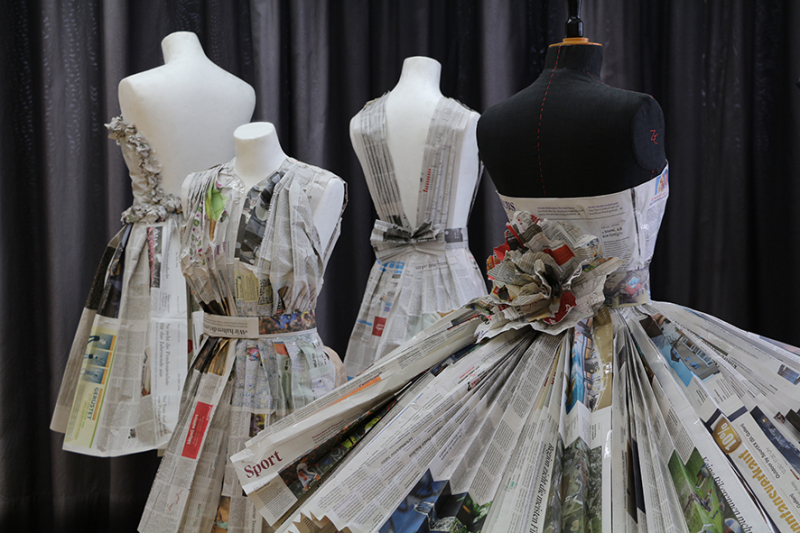
Textilmuseum Vadianstrasse 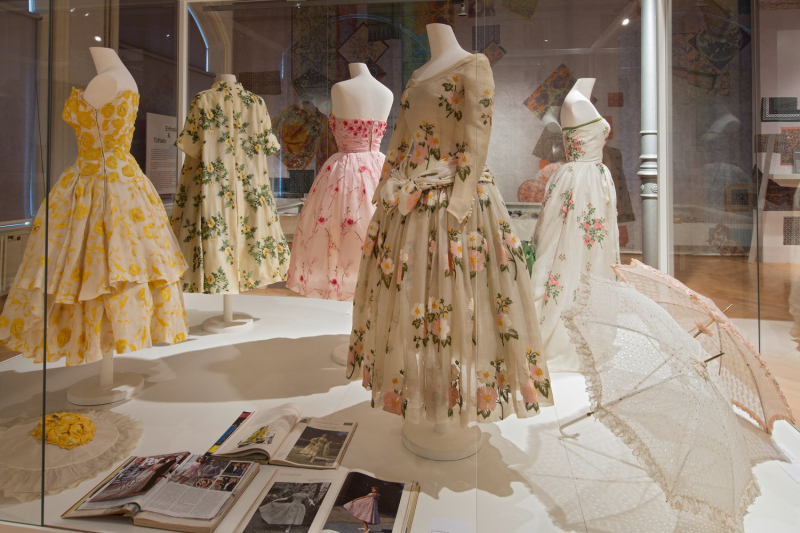
Textilmuseum Vadianstrasse -
Ballenberg is a Swiss open-air museum that shows traditional buildings and architecture from around the country. Ballenberg, located near Brienz in the municipality of Hofstetten bei Brienz, Canton of Bern, features about 100 historic structures that have been relocated from their original locations. It is a national heritage site in Switzerland.
Not all museums are housed in structures. Visitors to the Swiss Open-Air Museum in Ballenberg can wander through and around approximately 100 rural residences and agricultural structures from all across Switzerland. All of the structures at the museum are authentic, having been dismantled from their original location and rebuilt in Ballenberg. It's the closest tourists can go to experiencing old Swiss life.
Around 250 animals roam the grounds, providing an extra dimension of realism to the area. Aside from the houses, the museum also features gardens, meadows, and pastures based on historical models to provide visitors with a view of rural Switzerland in the past.Location: Museumsstrasse 131, Hofstetten bei Brienz, BE 3858
Website: ballenberg.ch/en
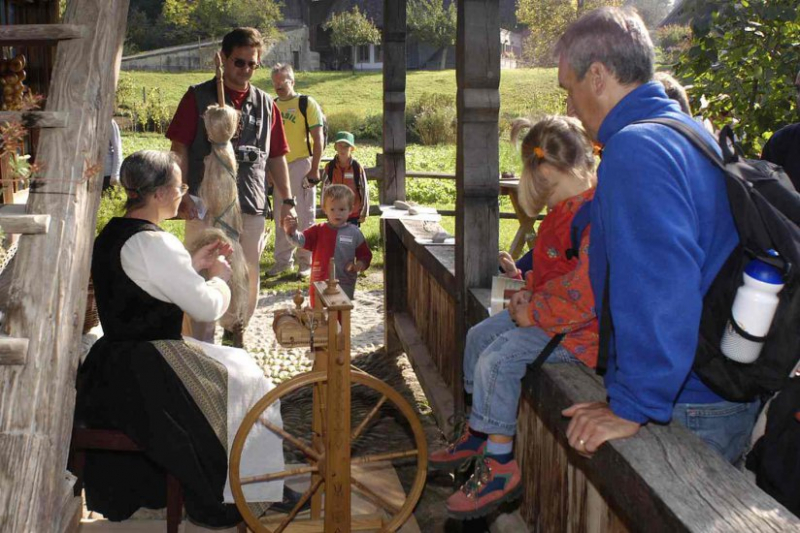
Swiss Open-Air Museum 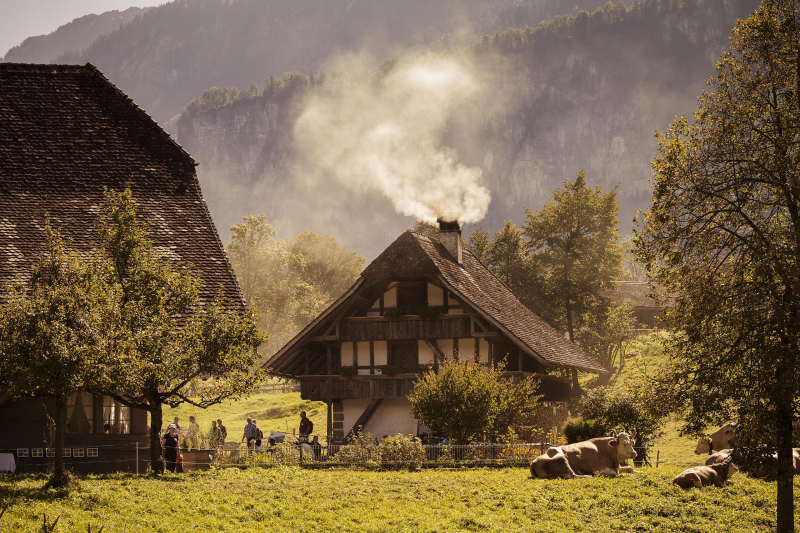
Swiss Open-Air Museum -
In the 1920s, Martin Bodmer founded the library. Bodmer chose works from the Bible, Homer, Dante Alighieri, William Shakespeare, and Johann Wolfgang von Goethe, whom he considered as the five foundations of global literature. He valued signatures and first editions beyond everything else. To house the collection, Bodmer erected two neo-baroque villas in Cologny in 1951.
The Bodmer Foundation was founded in 1970, just before Bodmer's death, to make the collection accessible and protect it. Mario Botta renovated the structure in 2003. He built a two-story subterranean structure perforated by light shafts to connect the cellars of the two houses.The Bodmer Museum exhibits the progression of civilisation since the creation of writing 5,000 years ago. One of humanity's most important innovations, there are instances of many languages and imagery utilized in writing on papyrus, manuscripts, and first edition manuscripts. Martin Bodmer, a well-known Swiss bibliophile and scholar, gathered all of these. Bodmer began his collection as a library, with the intention of displaying it as a museum to highlight an essential aspect of humanity's progress. The museum was designed by Mario Botta and first opened to the public in 2003.
Location: Route Martin-Bodmer 19, Cologny, GE 1223
Website: fondationbodmer.ch/en/
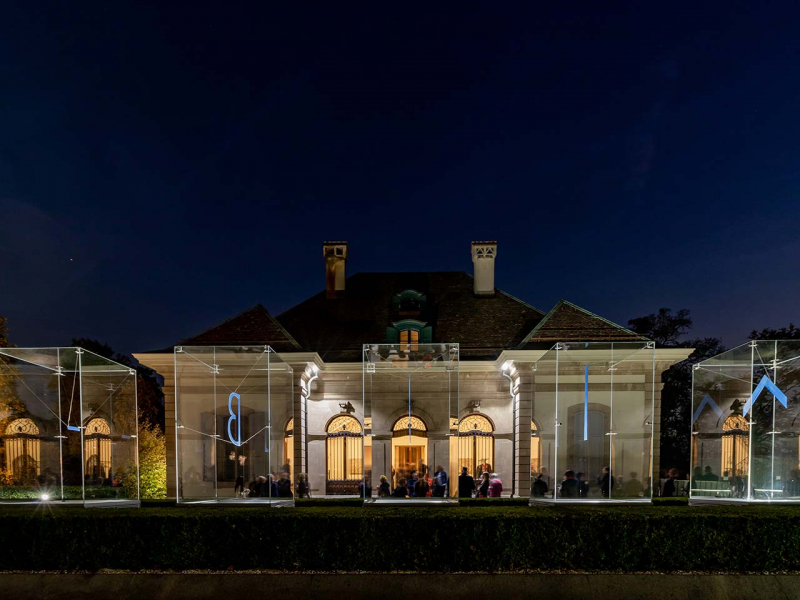
Fondation Martin Bodmer 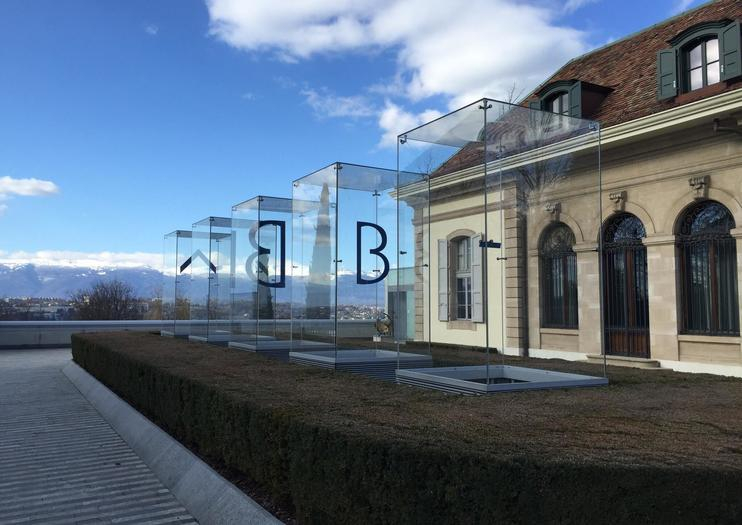
Fondation Martin Bodmer -
The Aargau Museum is a wonderful collection of structures that allow visitors to understand and experience history firsthand. The museum consists of four castles (Lenzburg, Hallwyl, Wildegg, and Habsburg), the Königsfelden monastery, the Legionnaire's Path and the museum in the Roman camp of Vindonissa, the Egliswil collection center, and the industrial culture TOUR Abach. Each of the structures is a memorial to a long past. The Lenzburg castle, one of Switzerland's largest hilltop fortifications, today houses a knight and nobility museum, an original jail, and a history studio.
Needless to say, the Aargau Museum as a whole is as large as it is immersive. Every castle is surrounded by magnificent gardens and vineyards that house relics and displays from 11 generations of counts, dukes, and explorers. There are even more houses, gardens, and farms within each castle. Exhibits of ancient horticulture may be seen in the Wildegg Castle in particular.
Location: Museum Aargau, Schloss Wildegg, Effingerweg 6, 5103 Wildegg
Website: museumaargau.ch
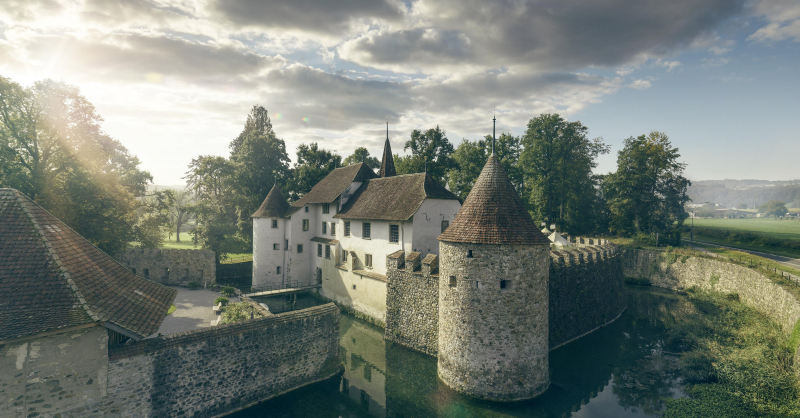
Museum Aargau 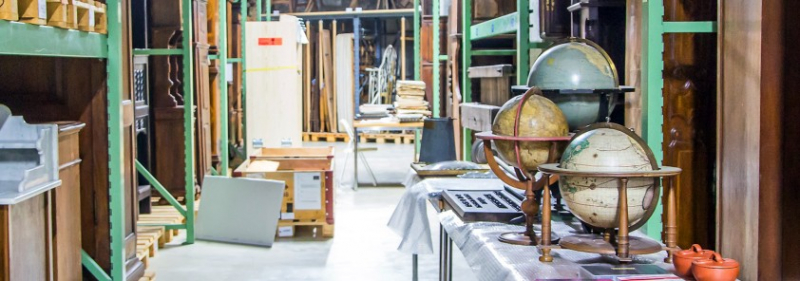
Museum Aargau












